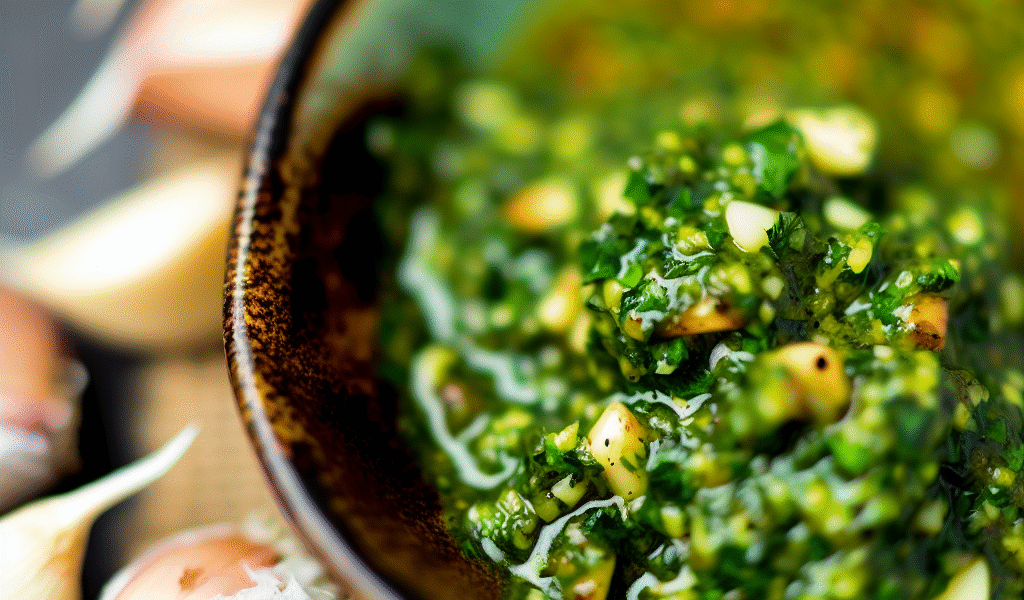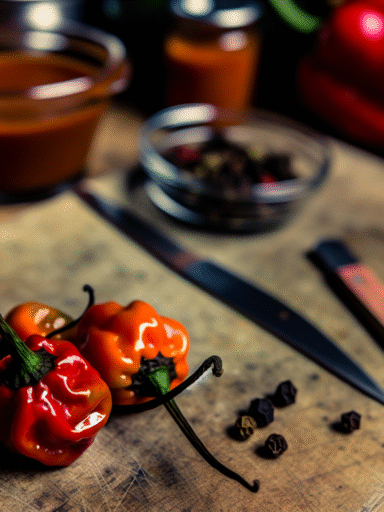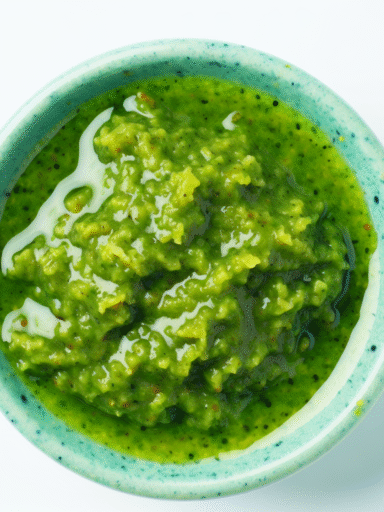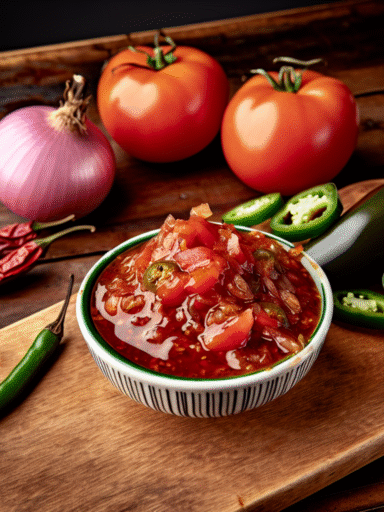Chimichurri
Tags / Categories: Herbaceous & Tangy, Parsley & Garlic, Argentine & Uruguayan, Grilling & Marinades, Condiment & Sauce
- Prep Time: 10 minutes
- Cook Time: 0 minutes
- Total Time: 10 minutes
- Difficulty: Easy
- Yield: About 1 cup (240ml)
Introduction:
If you’ve ever experienced the magic of a perfectly grilled steak at an Argentine asado, chances are chimichurri was involved. This bright, herb-packed sauce is what takes simple grilled meats from delicious to unforgettable. Made with fresh parsley, garlic, vinegar, and a little chili, chimichurri is a fresh and zesty companion you didn’t know your grill needed.
Ingredients List
- 1 cup fresh flat-leaf parsley, finely chopped
- 4 cloves garlic, minced (feel free to add an extra if you love garlic!)
- 2 tablespoons fresh oregano, finely chopped (or 2 teaspoons dried oregano)
- 1/2 teaspoon crushed red pepper flakes (adjust to taste)
- 1/2 cup extra virgin olive oil
- 1/4 cup red wine vinegar
- 1 teaspoon coarse salt
- Freshly ground black pepper, to taste
Instructions
- Prep your herbs: Rinse the parsley and oregano under cold water and pat them dry thoroughly with a kitchen towel. It’s important they’re nice and dry to maintain the sauce’s vibrant flavor.
- Chop, don’t pulverize: Finely chop the parsley and oregano. You want a little texture here — don’t stress if it’s a bit chunky; that’s part of chimichurri’s charm.
- Mix the dry ingredients: In a bowl, combine the chopped parsley, oregano, minced garlic, and crushed red pepper flakes. Stir in the salt and black pepper.
- Add the liquids: Pour in the red wine vinegar followed by the olive oil, stirring slowly to incorporate everything into a loose, vibrant mixture.
- Adjust and rest: Taste your chimichurri – add more salt, pepper, or red pepper flakes as needed. Let it sit at room temperature for at least 15 minutes before serving to allow the flavors to mingle. Your kitchen will smell amazing right about now!
Serving Suggestions
Chimichurri is outrageously versatile. Spoon it over grilled steaks, chicken, lamb, or fish for an instant upgrade. Drizzle it on roasted vegetables or even use it as a zesty marinade. It’s a fantastic dip for warm crusty bread or roasted potatoes, too. Honestly, keep a jar in your fridge and see where it takes you!
Origin & History
The story behind chimichurri is as colorful as its flavors. Originating from Argentina and Uruguay, this sauce was originally the go-to for gauchos – South American cowboys who spent days tending cattle. It’s likely a blend of local indigenous ingredients with European influences, particularly Spanish and Italian, who brought herbs and vinegar to the region. Chimichurri quickly became a staple at open-fire barbecues, or “asados”, celebrated for its fresh punch that cuts through the richness of grilled meats. Legend even says the name came from a misheard English phrase by a Basque immigrant, though the truth remains a tasty mystery!
Variations & Substitutions
Chimichurri is endlessly adaptable. You can swap parsley for cilantro if you fancy a slightly brighter, citrusy note. Add fresh mint for a refreshing twist. Some versions include a touch of lemon juice instead of vinegar for a lighter acidity. If you want to make it milder, reduce or omit the red pepper flakes. Garlic lovers might add more, while those avoiding raw garlic can gently sauté the garlic before mixing it in. Vegan and gluten-free? You’re already there with this sauce! Feel free to experiment; it’s a forgiving sauce that invites creativity.
Storage & Make-Ahead Tips
Chimichurri actually improves with time. Store it in an airtight container in the refrigerator for up to one week. The olive oil may solidify when chilled — simply bring it back to room temperature and give it a good stir before using. Want to freeze it? Go ahead, but keep in mind the texture might soften slightly once thawed. When making ahead, prepare your chimichurri at least a couple of hours in advance to let those flavors really meld — overnight is even better if you can wait!
Nutritional Information (per 2-tablespoon serving)
- Calories: ~120 kcal
- Fat: 14g (mostly healthy monounsaturated fats from olive oil)
- Carbohydrates: 1g
- Protein: 0.3g
- Fiber: 0.5g
Related Sauces / Try Next
- Pesto Genovese – Italian basil and pine nut sauce
- Tzatziki – Creamy cucumber and garlic yogurt sauce
- Salsa Verde – Bright Italian green sauce with parsley and anchovy
FAQ
Q: Can I use dried herbs instead of fresh for chimichurri?
A: While fresh herbs give that vibrant flavor and texture, you can substitute with dried oregano (1 teaspoon dried) if fresh isn’t available, but fresh parsley is a must for authentic taste.
Q: How spicy is chimichurri traditionally?
A: It usually has a mild kick from red pepper flakes, but you can easily adjust this to be milder or hotter depending on your preference. Some versions skip the pepper flakes entirely for a gentler flavor.
Q: Can chimichurri be used as a marinade?
A: Absolutely! It works beautifully as a marinade, especially for beef, pork, or chicken. Marinate for 30 minutes to a few hours before grilling to infuse the meat with fresh herbaceousness.
Conclusion:
Chimichurri is a little jar of joy — simple yet powerful, fresh yet bold. It embodies the spirit of South American grilling but fits effortlessly into kitchens worldwide. Whether you’re drizzling it over a steak or experimenting with it as a dip or marinade, this sauce brings brightness and vibrancy to every bite. Keep this recipe in your culinary arsenal; it’s one of those classics that never goes out of style.



